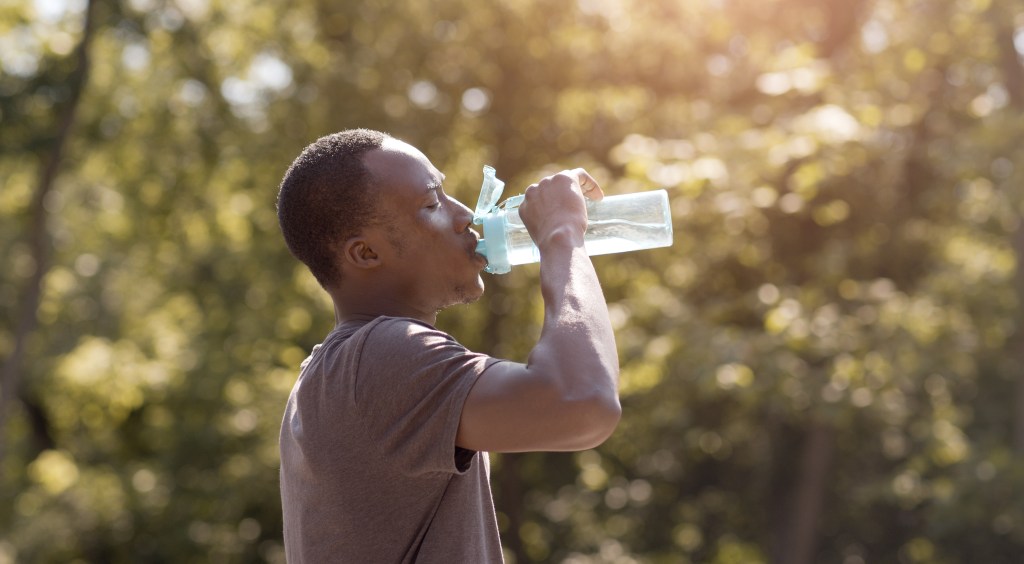
July in Alabama is hot and humid. With people spending more time outdoors this time of year, UAB Medicine Emergency Department physicians are reminding the public to stay hydrated, keep cool, and be aware of the signs of heat-related illness and dehydration.
UAB Department of Emergency Medicine Chair Marie-Carmelle Elie, M.D., says heat illness can be a dangerous, even fatal condition.
“The body uses sweating to cool itself. But with extreme temperatures, high humidity, and a high heat index, body temperature can rise to dangerous levels,” Dr. Elie said. “Older adults, young children, and those with preexisting conditions are at the highest risk, but anyone can develop heat-related illness under the right conditions.”
The Centers for Disease Control and Prevention (CDC) lists five different types of heat illness:
- Heat stroke: a life-threatening condition in which the body temperature may rise above 103°F within minutes
- Heat exhaustion: an illness that can lead to heatstroke
- Heat cramps: muscle pains or spasms that happen during heavy exercise
- Sunburn: painful, red, warm skin, and possible blisters
- Heat rash: skin irritation from excessive sweating
“Heat stroke and heat exhaustion are the two most dangerous conditions,” Dr. Elie said. “Heat stroke is a medical emergency – call 911 immediately if heat stroke is suspected.”
The signs of heat stroke include:
- High body temperature, above 103°F
- Hot, red, dry skin
- Rapid and strong pulse
- Dizziness
- Possible unconsciousness
- Nausea
- Confusion
“Call 911 and move the person to a cooler environment,” Dr. Elie said. “Reduce the person’s body temperature with cool cloths or even a bath but do not give fluids.”
Symptoms of heat exhaustion include:
- Heavy sweating
- Weakness
- Cold, pale, clammy skin
- Fast, weak pulse
- Nausea or vomiting
- Fainting
- Muscle cramps
“Move the person to a cooler location and have them lie down, while loosening their clothing,” Dr. Elie said. “Apply wet, cool cloths to as much of the body as possible, and have them sip water.”
The CDC offers these tips on how to avoid heat illness:
- Drink 2-4 cups of water every hour while working or active outside. Do not wait until you are thirsty to drink.
- Avoid alcohol or liquids containing large amounts of sugar.
- Wear and reapply sunscreen as indicated on the label.
- Schedule tasks for earlier or later in the day to avoid midday heat.
- Wear a brimmed hat and loose, lightweight, light-colored clothing.
- Take breaks, preferably in an air-conditioned area.
- Seek medical care immediately if you or someone with you has symptoms of heat-related illness.
“Drink water, take breaks, and don’t try to do too much if you are outside in the heat,” Dr. Elie said. “And don’t forget to check on elderly friends and neighbors. The heat is difficult for pets, too, so bring your dogs and cats inside during the worst of the day’s heat.”
